Klabböle Rännan – Sweden’s Endless Half Pipe
Umeå is often referred to as the capital of northern Sweden, surrounded by mountains, forests and endless coastline, it is a haven for outdoor enthusiasts. The city also holds notoriety for one of the most unique skateboarding setups, a truly amazing spot that should be on the bucket list for any skater.
Check out the podcast at the Skate Spot Pod
“A unique skateable monolith to tick off the spot list. A perfect 6’ tall metal half pipe stretching into the distance further than the eye can see, through a secluded section of Swedish forest. The term ‘insane terrain’ most certainly applies here!” – Dan Cates
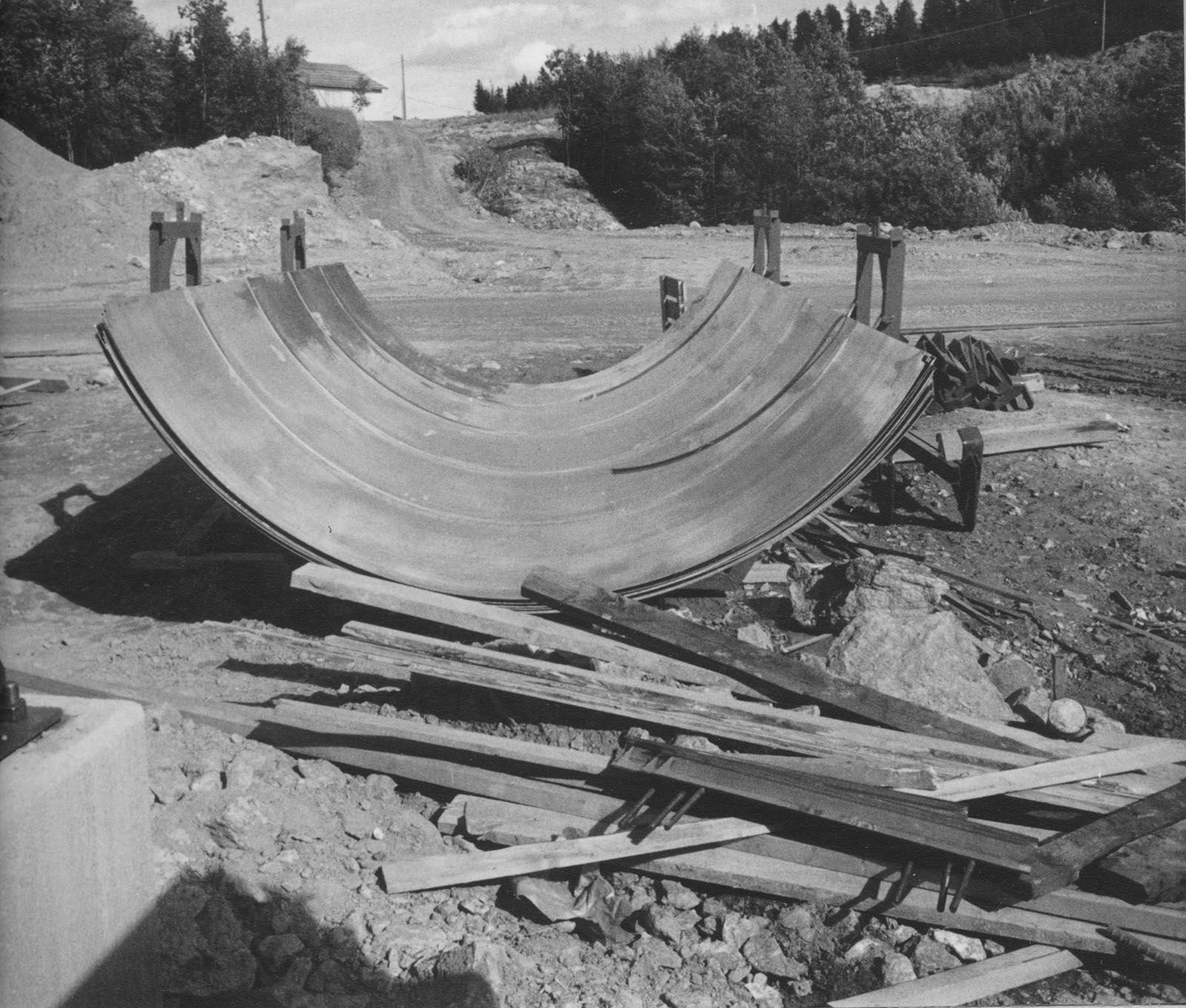
Construction of the flume. Ume River, Stornorrfors Hydroelectric Power Station, in year 1958. Photograper: Unknown. Source: Umeå Flottningsförenings arkiv, Folkrörelsearkivet i Västerbotten/Archive of Popular Movements in Västerbotten.
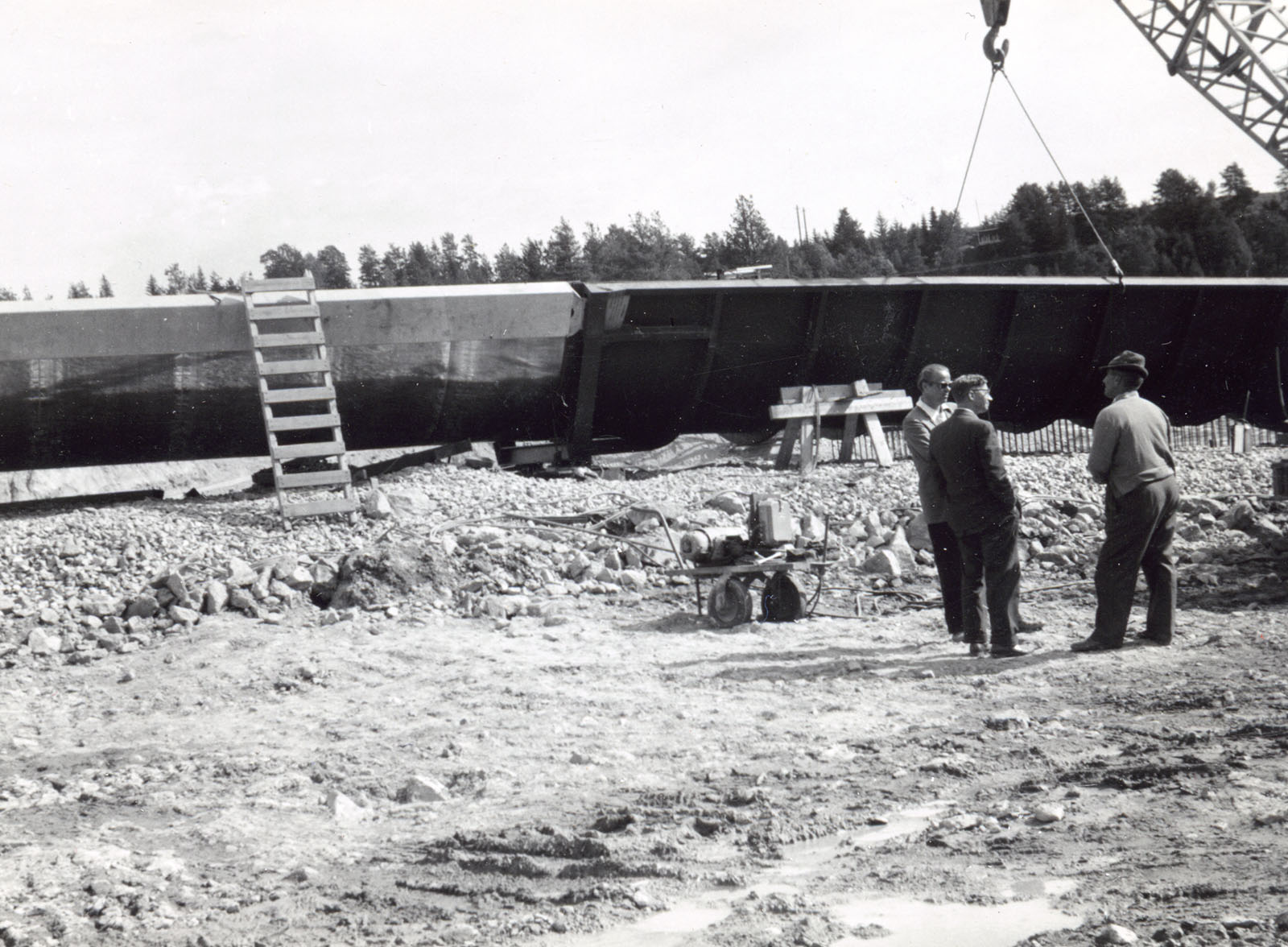
The new sections of the log flume are set in place with a crane. Three men can be seen in front. Two are probably inspectors. Ume River, Stornorrfors Hydroelectric Power Station, in year 1959. Photograper: Unknown. Source: Umeå Flottningsförenings arkiv, Folkrörelsearkivet i Västerbotten/Archive of Popular Movements in Västerbotten.
Rännan, short for timmerrännan, is a log flume located in Klabböle, a village just outside Umeå. The flume was built in 1959 alongside the construction of the nearby Stornorrfors Power Plant. It´s purpose was to float timber downstream, which provided a cheap and relatively easy means of transportation. These could be found all over Sweden, however, they were particularly popular in the north of the country due its dense forests. Originally 6 kilometres in length it was built with aluminium sheeting which was later replaced with galvanised steel of higher strength[1]. The flume transported around 30,000 logs per day and up to 12 million per year[2]. It was in operation until 1980 yet in 1984 large amounts were sold for scrap. Luckily today 500 metres of it has been preserved at the Umeå Energicentrum. Rännan’s structure mimics that of a u-pipe, the speed and flow that are created in combination with its sheer length are out of this world.
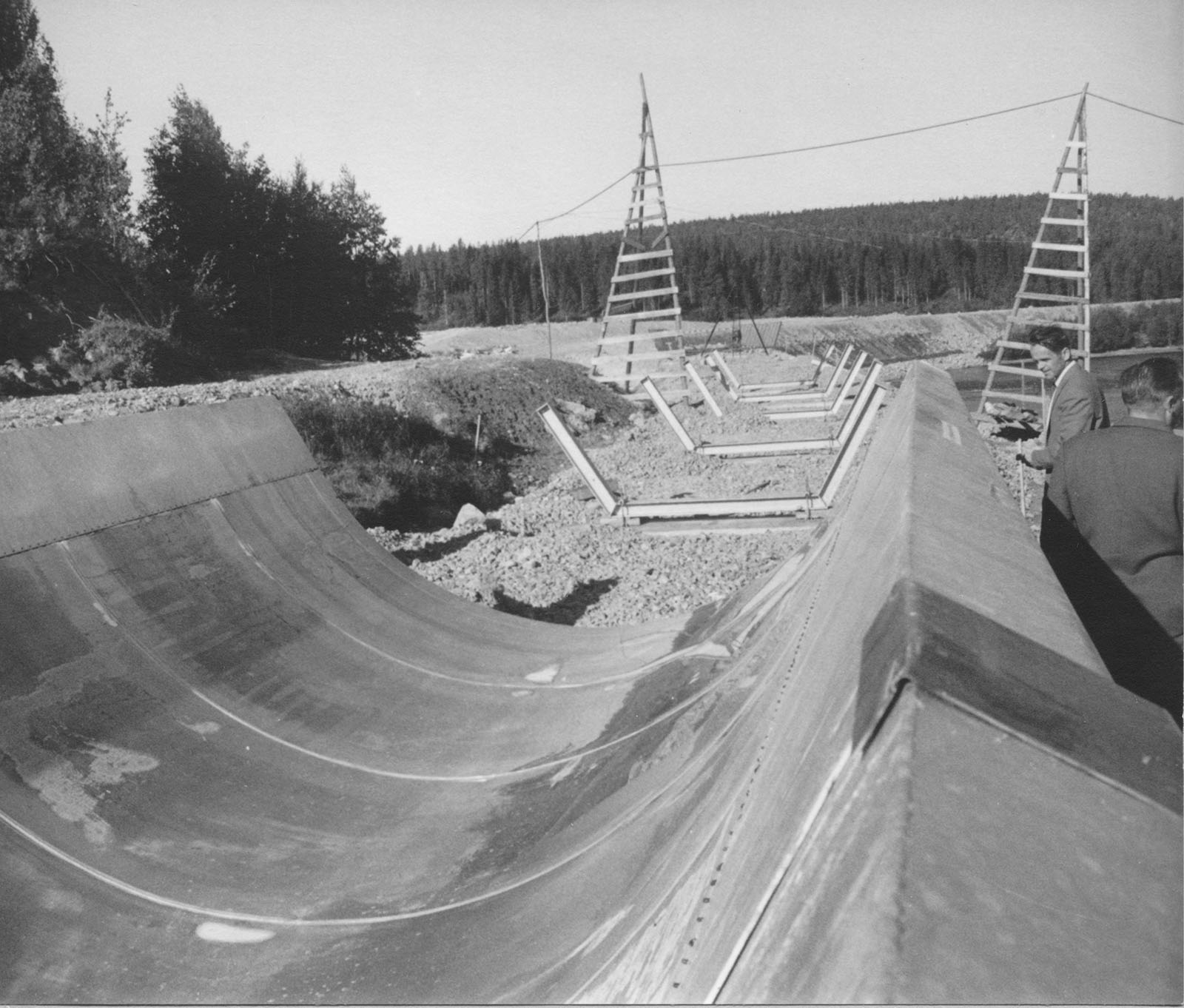
View of foundations seen from the flume. Two men inspecting. Ume River, Stornorrfors Hydroelectric Power Station, in September 1958. Photograper: Unknown. Source: Umeå Flottningsförenings arkiv, Folkrörelsearkivet i Västerbotten/Archive of Popular Movements in Västerbotten.
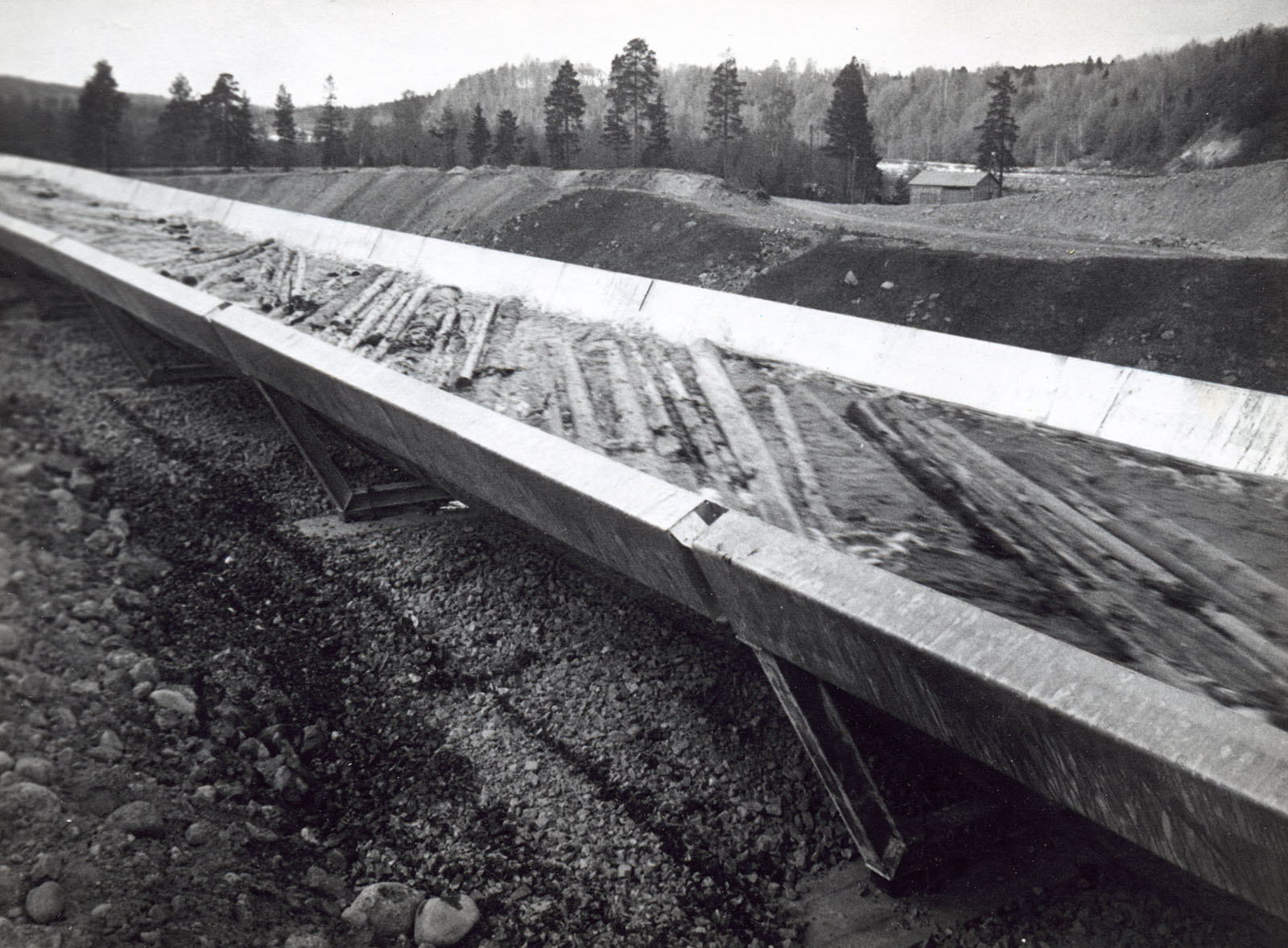
Section of the timber and water-filled flume.Ume River, Stornorrfors Hydroelectric Power Station, in year 1959. Photograper: Unknown. Source: Umeå Flottningsförenings arkiv, Folkrörelsearkivet i Västerbotten/Archive of Popular Movements in Västerbotten.
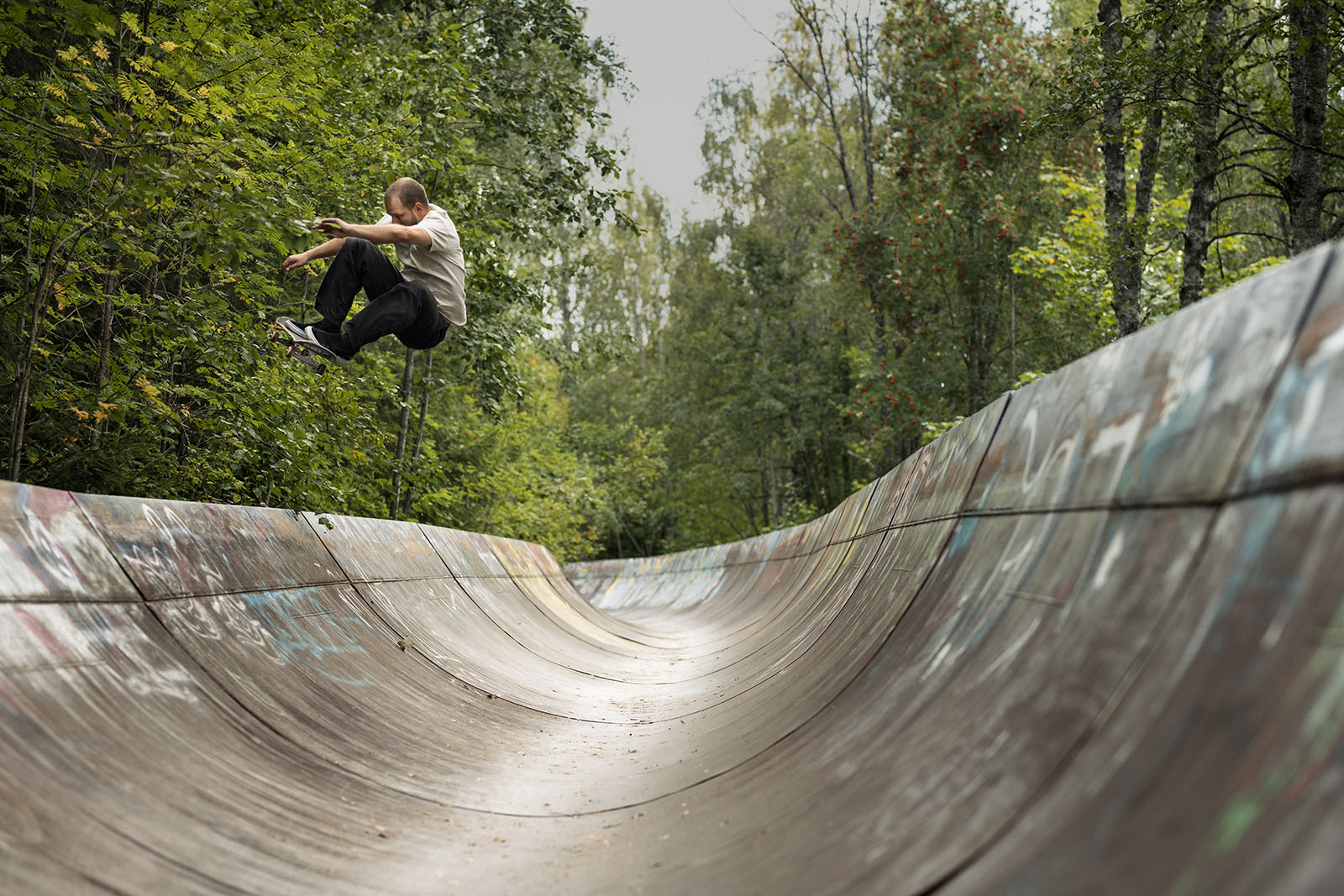
Simon Karlsson. Frontside ollie. Photo: Filip Erlind
“I have been all over the world and I’ve skated most of the famous full pipes and other stuff that is off the beaten track, on mine and other skateboarders’ bucket lists. Rännan is right up there with them, it’s in my top five of all time including Mount Baldy, the twin full pipes of the Philippines, The Glory Hole and the Lost skatepark of Portugal.” Trawler
To get an understanding of Rännans skateboarding history I caught up with some first generation street skaters from Umeå, Jonas Lyxzen and Jonas Lindahl.
“When I was 19, I moved to Umeå. At that time, me and my friends were driving around looking for skate spots in the city. There were no cell phones or Google Maps, just word of mouth. I remember that I heard a rumour that there was a “Ränna” in a place called Klabböle. I think this was around 92. We took my old Saab 900 and went looking. I don’t know if we were the first ones skating it, but we were for sure amongst the first. When we first saw it, we knew it was built for skateboarding. Ever since then we have been skating it regularly. It looks cool and mellow, but it is much harder to skate than it looks.” – Jonas Lyxzen
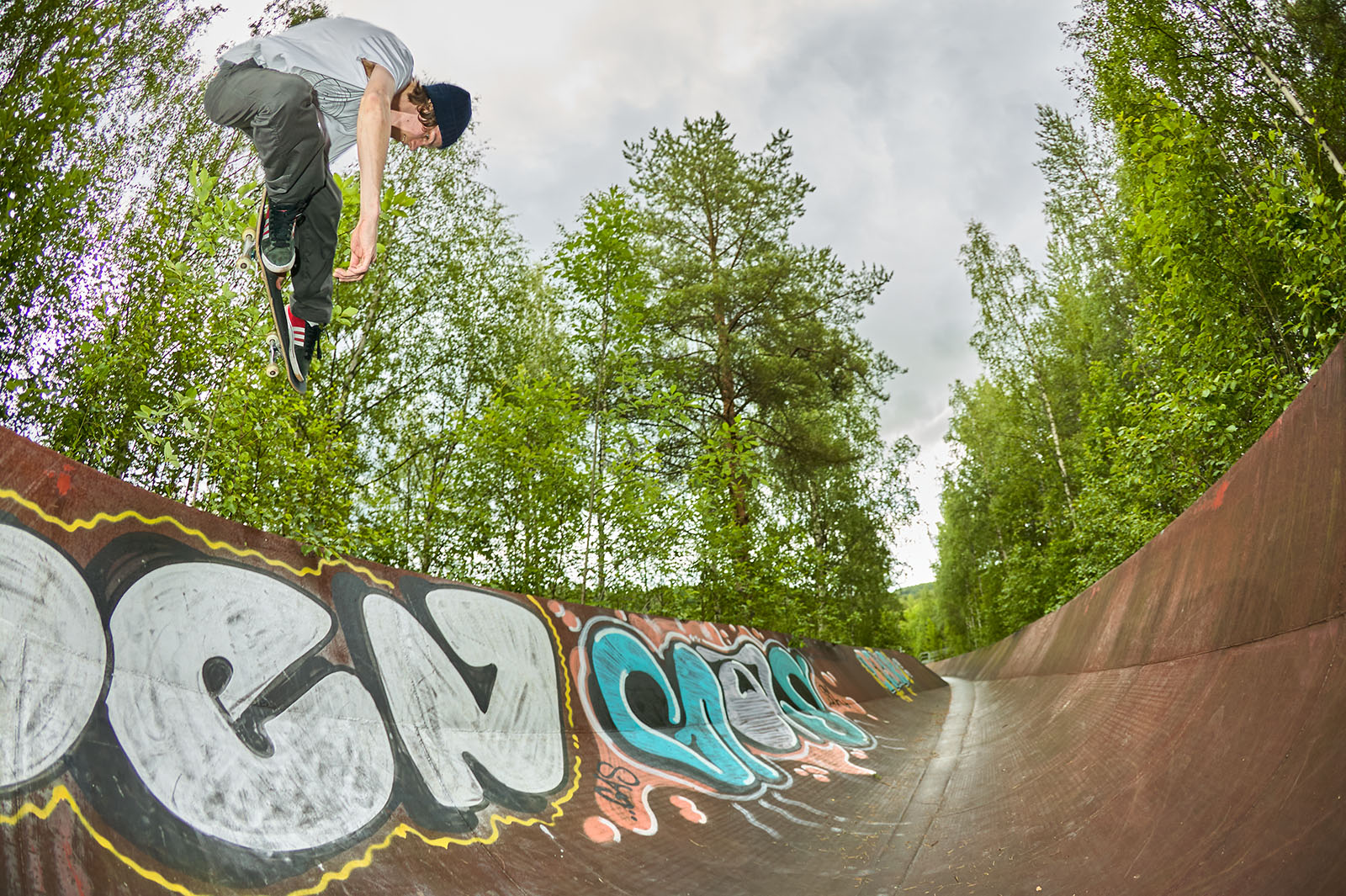
Jonas Lindahl. Backside Air. Photo: Richard Kavall
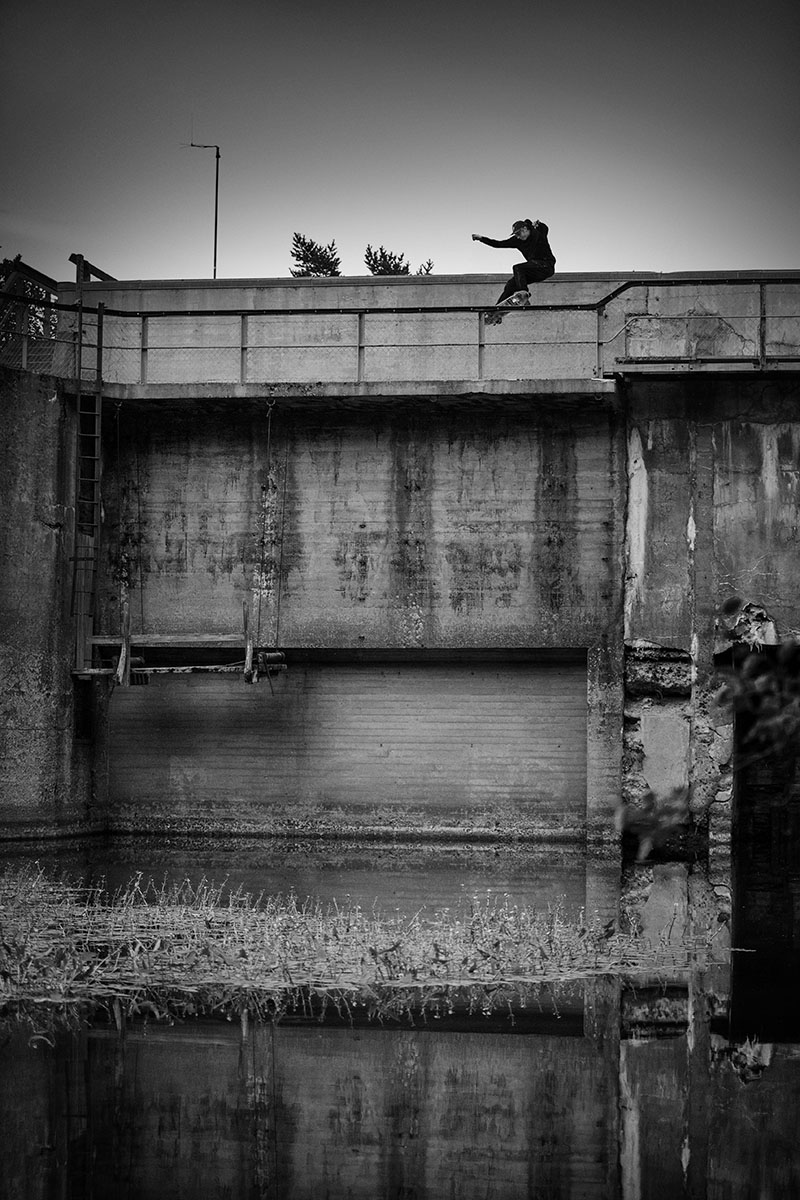
Nisse. Frontside smith grind. Photo: Boon
“I started skating Rännan during the nineties, probably somewhere around mid-nineties. As I remember it there was not much focus on tricks at that time. The focus was going down the thing a couple of times carving and hanging out and maybe going swimming in the river. There were no concrete parks around at that time and we did not have an indoor park yet. Besides smaller mini ramps we did not have much experience of gnarly trannies and (at least for me) doing lip tricks seemed quite intimidating.” Jonas Lindahl
During the mid 2000’s skaters started adopting more of a trick orientated approach to Rännan and the place gained more popularity as skaters started pushing its boundaries.
“As I remember in the early days we mostly skated it as a mini ramp, just going back and forth and doing lip tricks. Probably because we had a tradition in Umeå to skate wooden mini ramps and that was what we were used to. In 2010 the concrete park Sparken was built and people from all over Sweden and abroad started coming to Umeå for contests. I guess many really good tranny skaters have visited Rännan and done amazing stuff there, it’s around this time that Rännan became famous. Social media probably helped a lot too.” – Jonas Lindahl
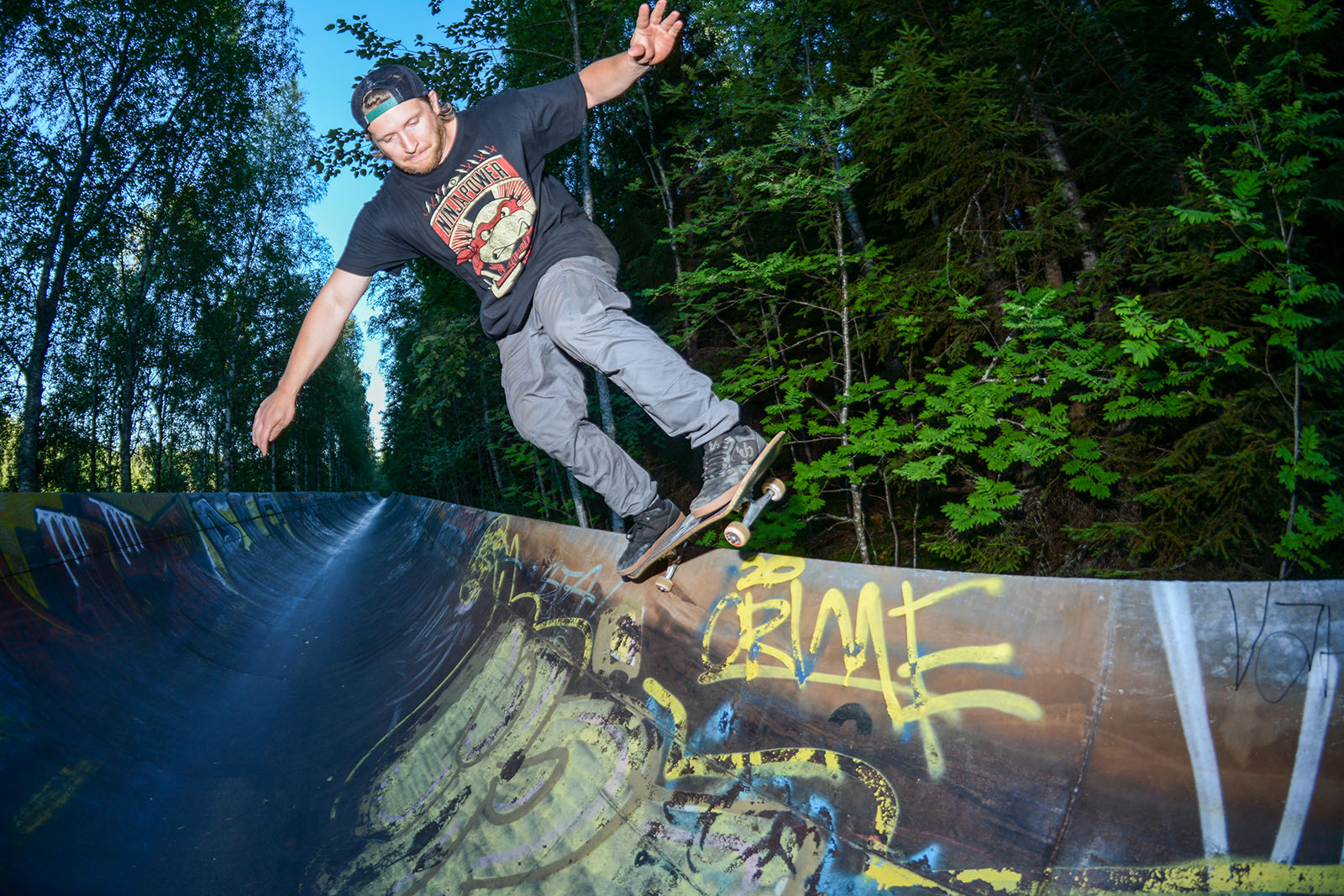
Palen. Backside 5-0. Photo: Trawler
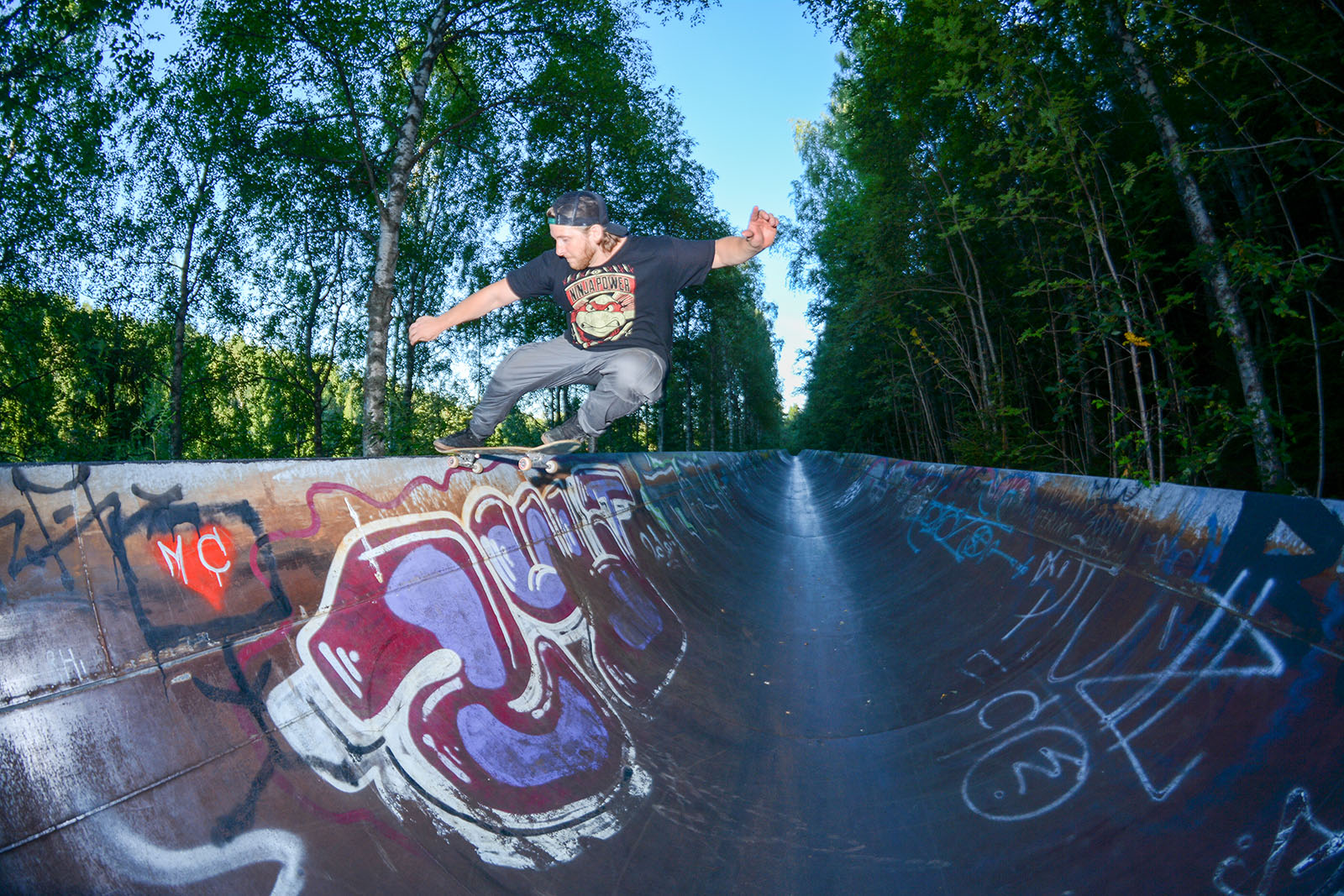
Palen. Frontside tailslide. Photo: Trawler
During 2014, Rännan featured on the cover of Swedish Skateboarding Magazine Giftorm which also followed with a feature in Giftorm’s Heja Sverige tour video during 2016. Its popularity and interest also increased with footage shot of skater John Magnusson. More recently its popularity has gained international attention. In 2016 it was skated by Wes Kremer, his footage was captured by filmmaker Jonathan Lomar, which was released in an episode of the Sour Files complements of Transworld Skateboarding. It has also made some recent drops on social media by Karl Berglind for Red Bull Skateboarding. Yet Rännans appearance in the media goes way back, documented in a number of early Swedish skate films. During 1999 footage was released in a film called Vita Nouva, it also made a feature in P-Rullen released 2006 and Futurum in 2010.
During recent years Rännan’s local ambassadors have been using social media to promote the uniqueness of this spot. Palen and his YouTube channel underflipped features content that showcases this amazing setup. I caught up with Palen to get an understanding of what Rännan means to him.
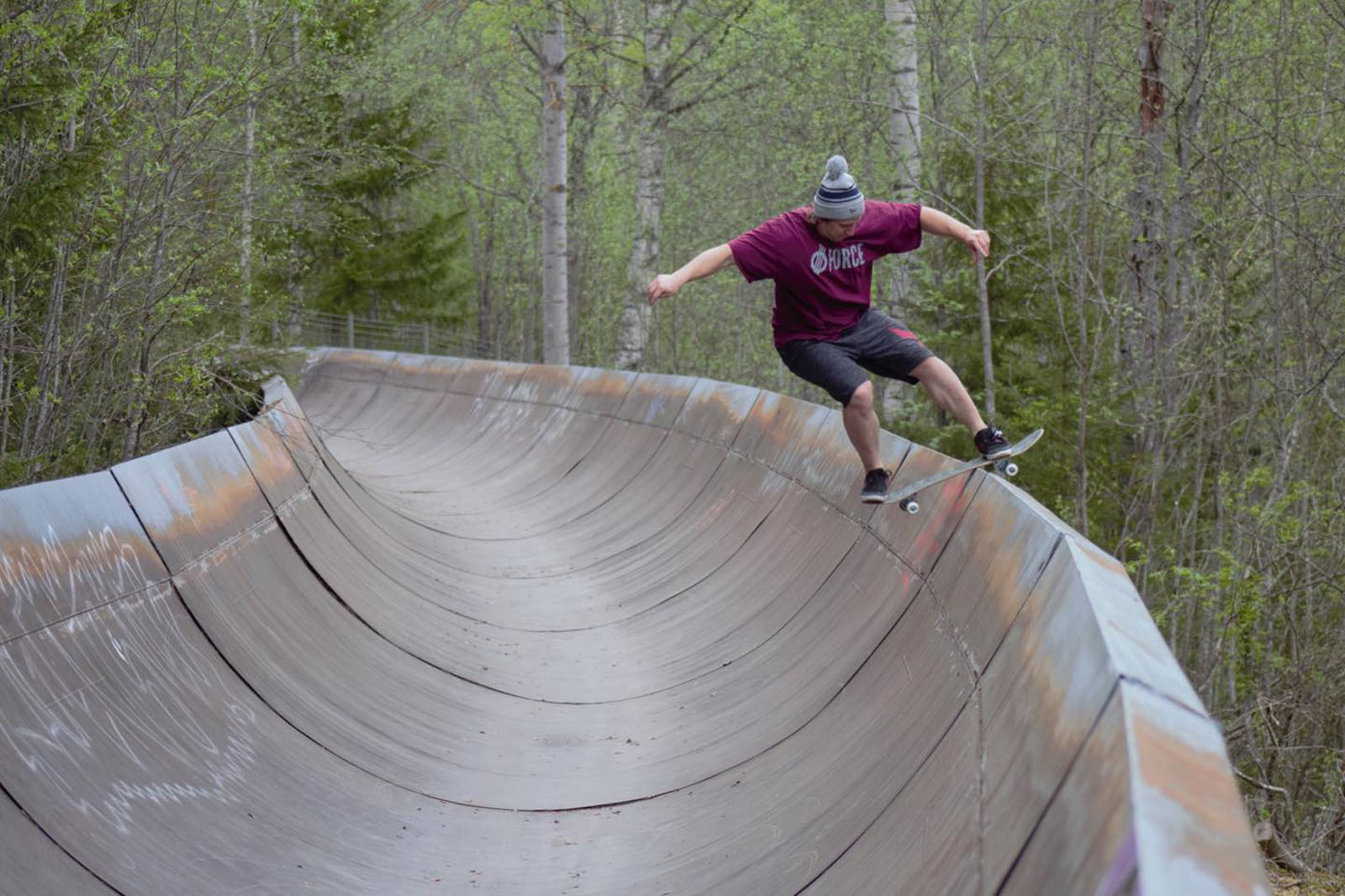
Backsdie boardslide. Photo: Palen
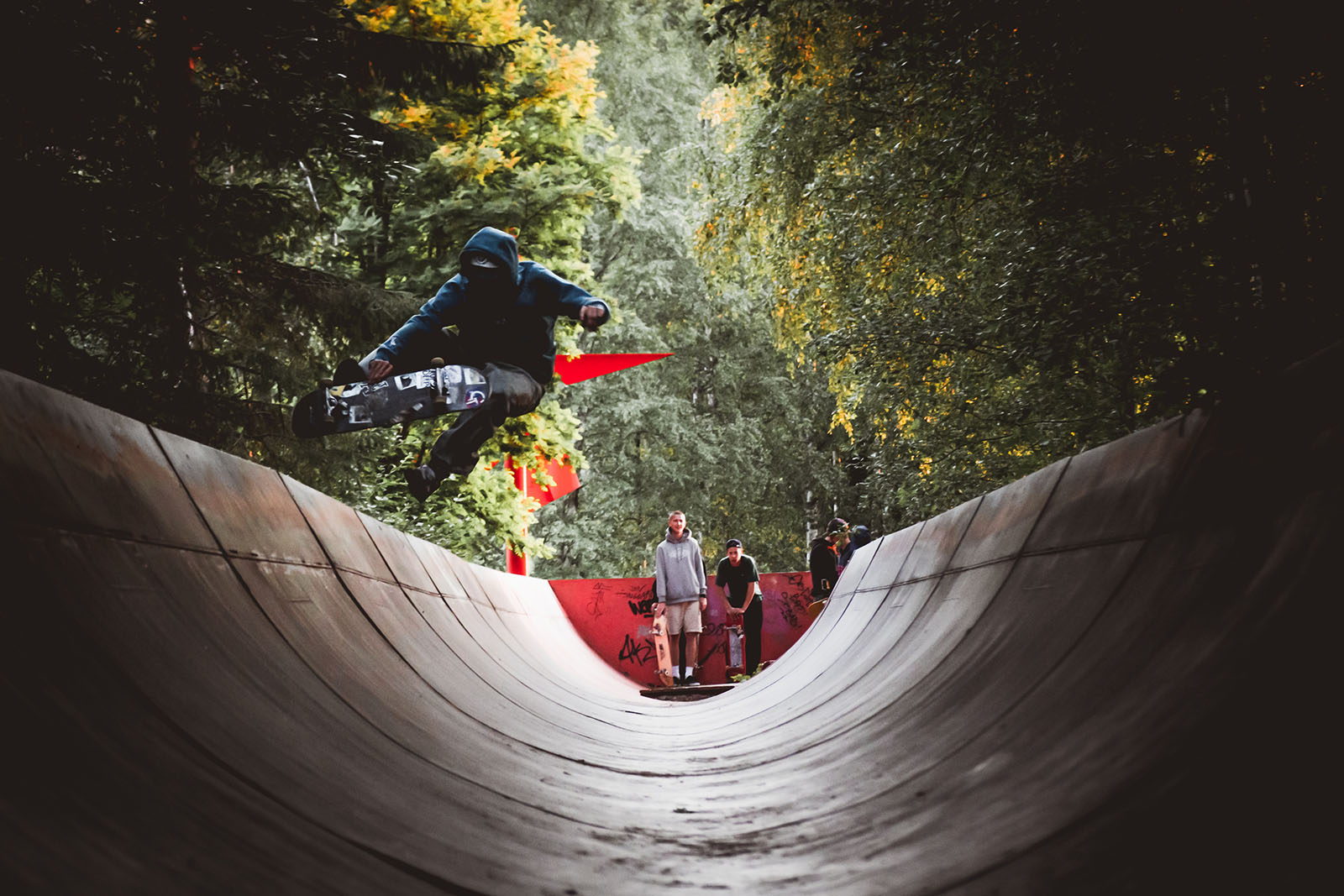
David Lunden. Frontside Boneless. Photo: Joakim Hansen
“As a kid long before I started skateboarding I used to run down it like many other kids growing up. Later in life when I started skating I was friends with a rollerblader who wanted to film there. I remember thinking it was the scariest thing I ever did doing a rock to fakie there! After that it became a yearly tradition to do a rock to fakie there every summer. Around 2015 I got myself a Gopro and filmed just cruising in the pipe. Since then I have come to love this spot. The aesthetics and location makes for a cool experience! At least once a year I go there just to carve and feel the rush. Landing tricks here is a real challenge so it’s always fun to see if I can escape with one! Earlier this summer I got a concussion from an over-rotated fs ollie. I’ve guided visitors throughout the years to this spot, and the look on their faces when they see this place for the first time is priceless! Kids on Christmas morning”. Palen
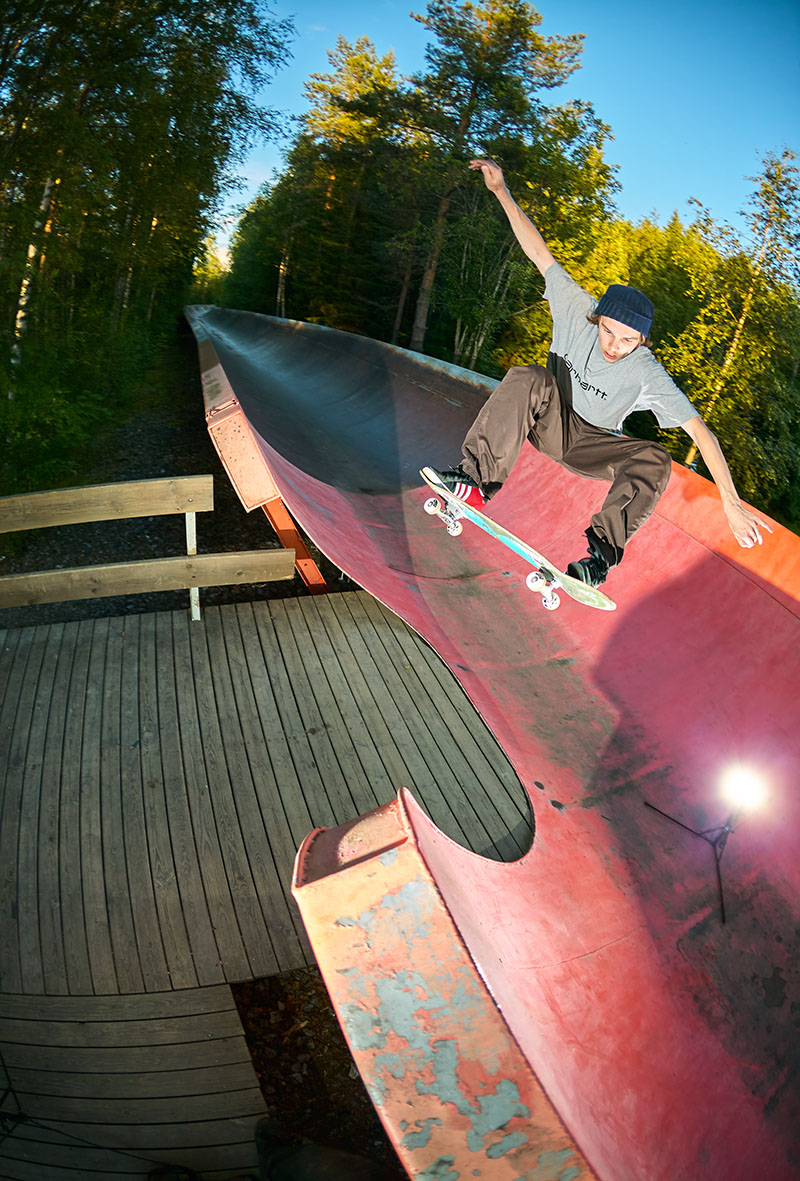
Jonas Lindahl. Frontside Ollie. Photo: Richard Kavall
Recently, international visitors, Dan Cates and Trawler were lucky enough to spend a weekend with Palen riding it during the Summer of 22. Dan was captivated by the spot after seeing it featured in a video from film maker Phil Evans. Trawler on the other hand is dedicated to travelling and documenting unique skate spots, he made a mental note of the spot after it was featured in a clip of skater John Magnusson. His visit to Rännan will feature in a chapter of his latest book, “The Ditch Rider’s Guide to The Galaxy” out now at ukskateboardbooks.bigcartel.com.
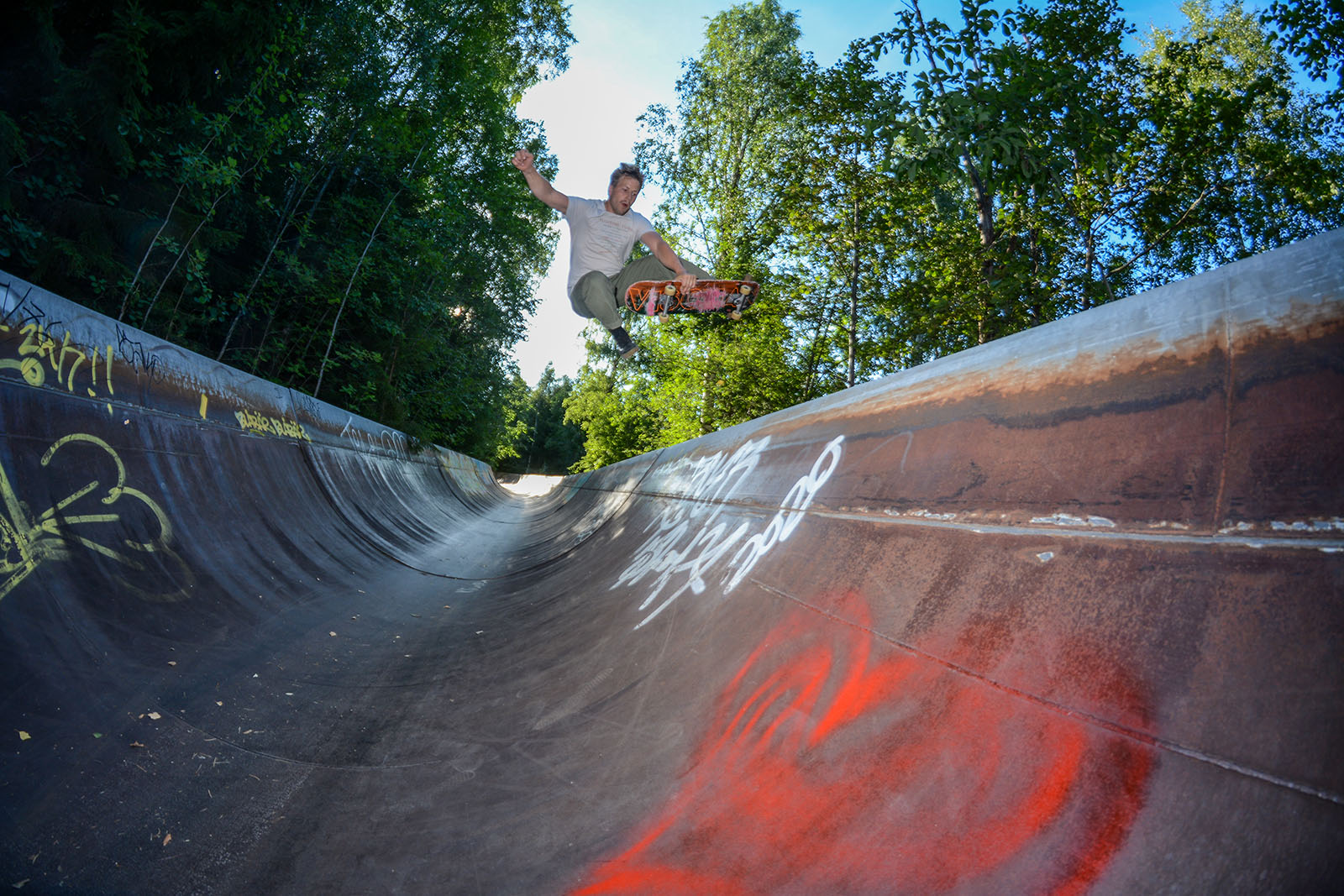
Frontside Boneless. Photo: Trawler
“My friend Trawler put out the feelers over Instagram to see who would accompany him on a mission to ride this piece of hallowed ground, I jumped at the chance with no hesitation. Your greatest concern if you are lucky enough to ever make it to the flume, will no doubt be the unforgiving trifecta of no flat bottom, sharp lip and no platforms. Don’t turn up with expectations of performing your best mini ramp run either because I can assure you that this spot, as epic as she is, is a cruel mistress.” – Dan Cates
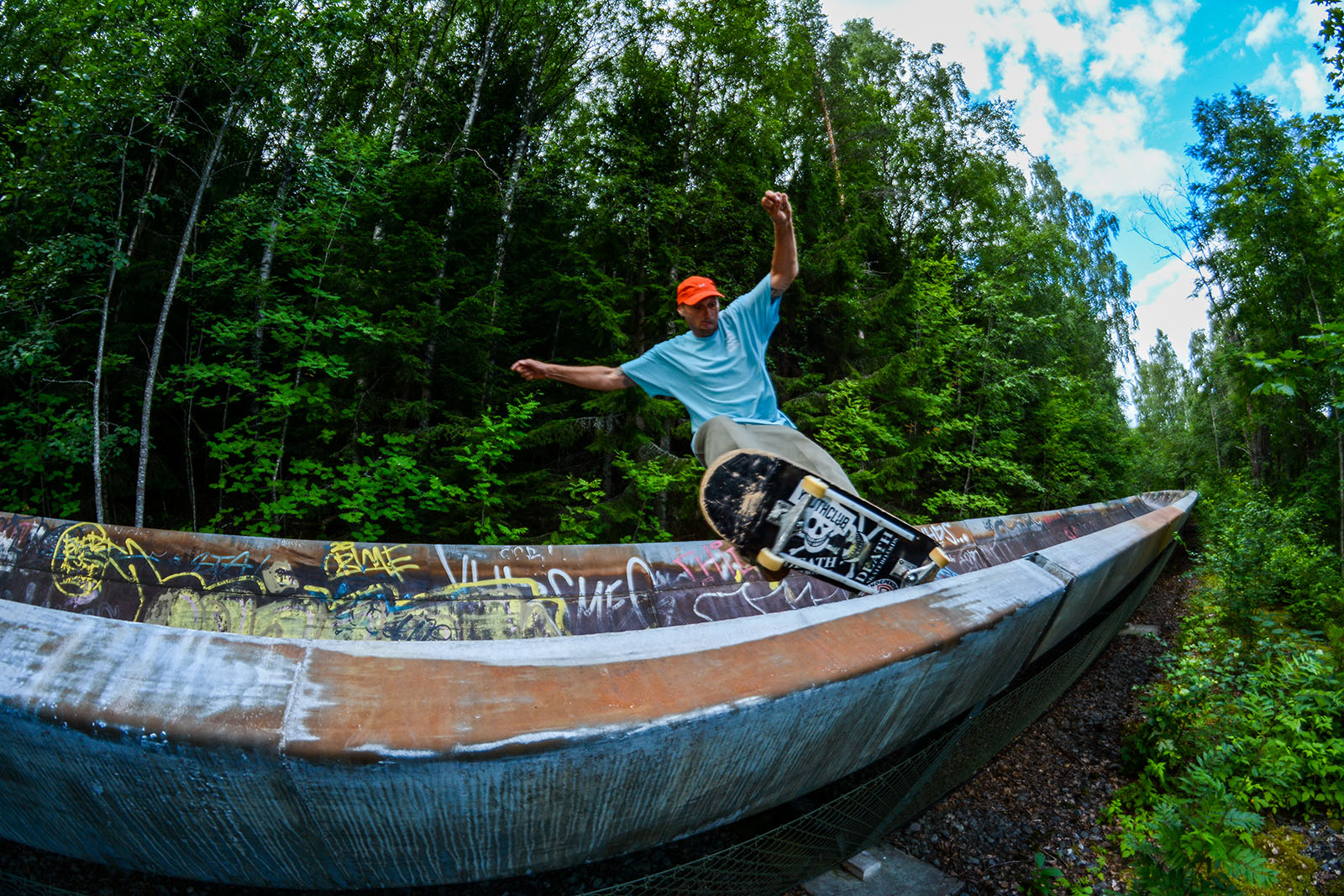
Dan Cates. Frontside Grind. Photo: Trawler
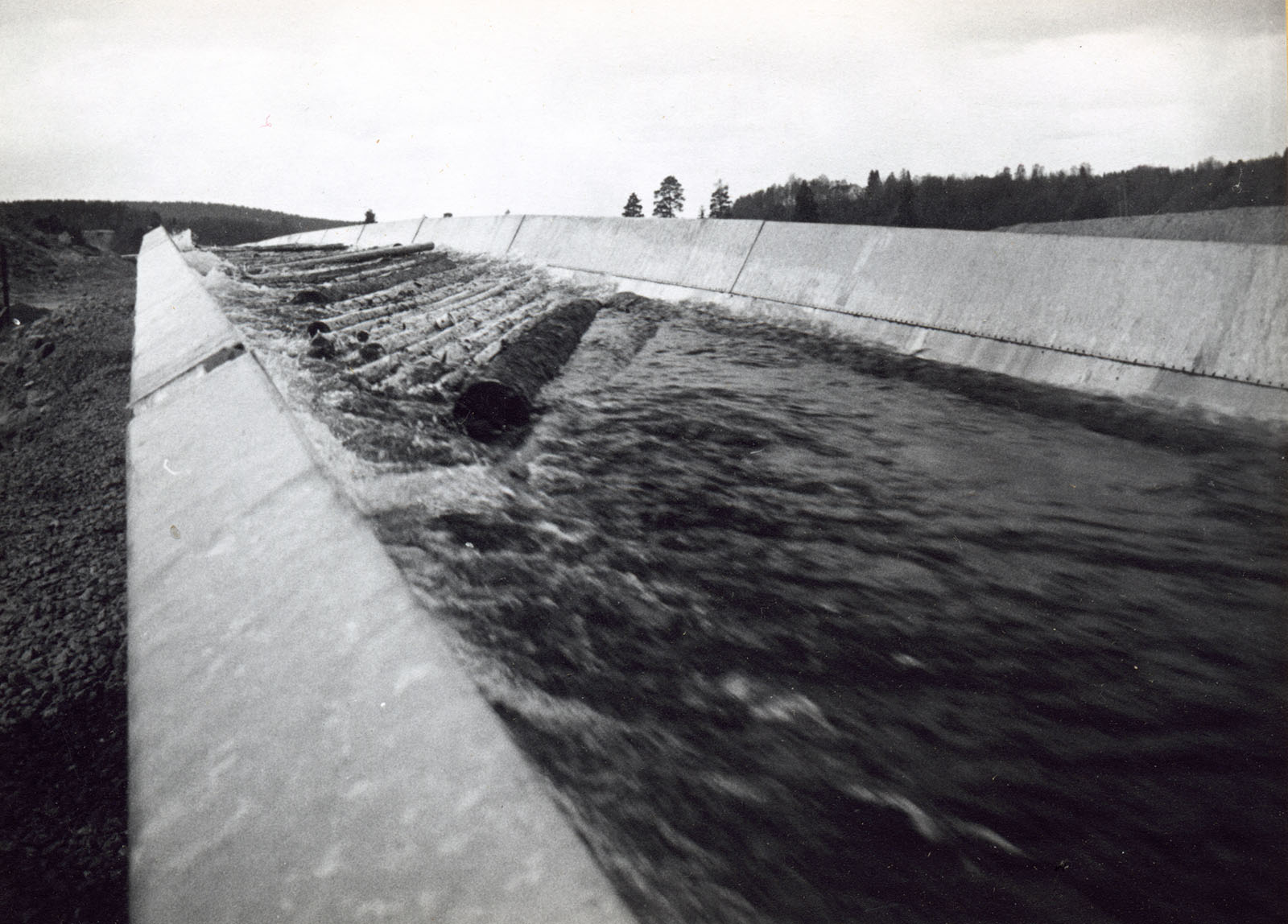
A section of the water-filled flume. Ume River, Stornorrfors Hydroelectric Power Station, in year 1959. Photograper: Unknown. Source: Umeå Flottningsförenings arkiv, Folkrörelsearkivet i Västerbotten/Archive of Popular Movements in Västerbotten.
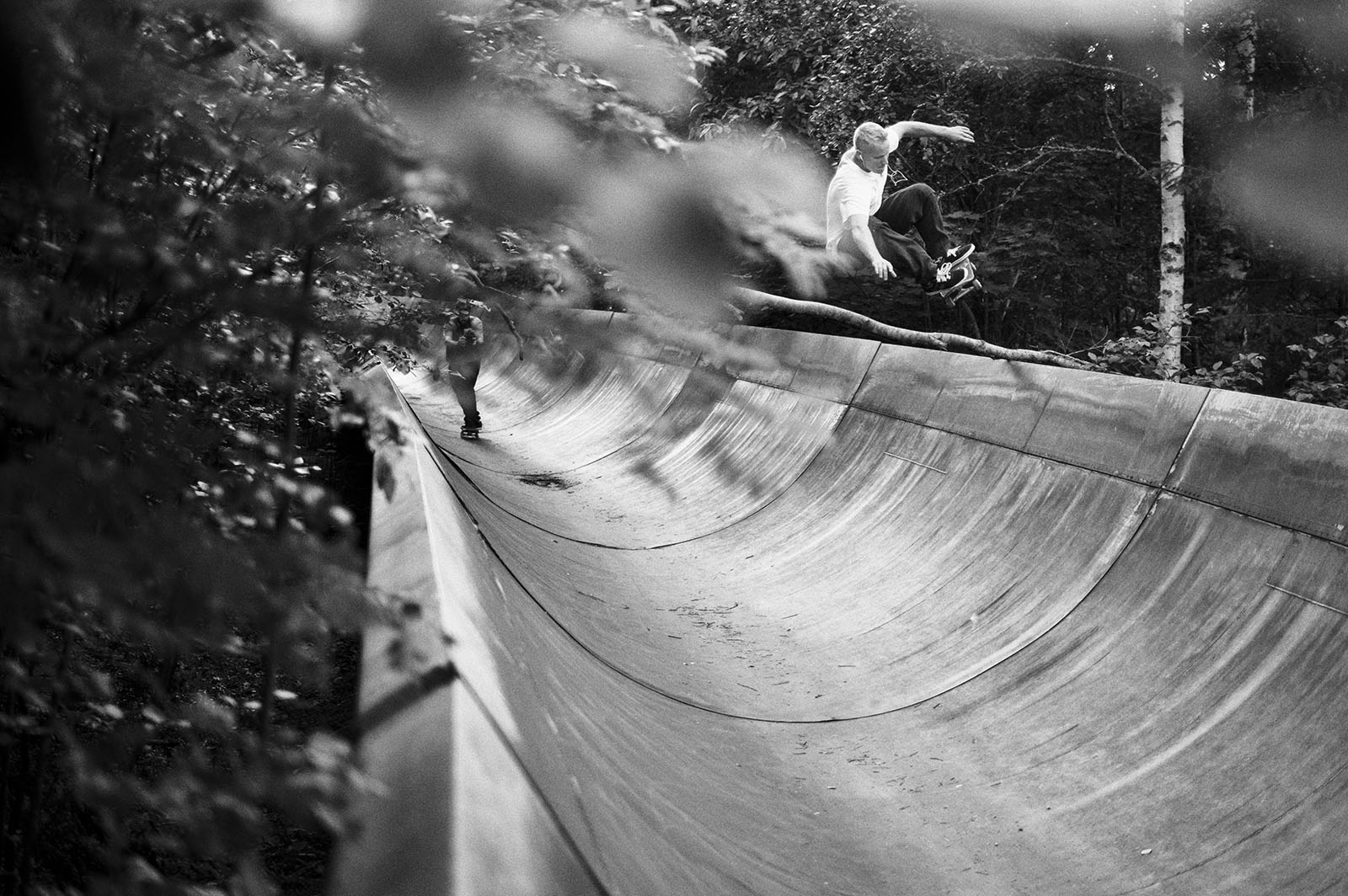
John Magnusson. Frontside Ollie. Photo: Nils
“I found it best to ride as a corkscrew picking up speed and getting up into the top 6 inches either side. It is not easy to ride as a mini ramp as the lip is angled back and it’s only a few inches wide. In my experience of riding down the chute you are in your mind’s eye two or three turns ahead of yourself and you don’t get that in normal skateboarding, it seems like riding a motorbike, looking out ahead of yourself . As long as your feet are sturdy and feel right then you just zone out ahead of yourself. It’s such a rush and such a cool feeling.” – Trawler
Despite now gaining more international attention, Rännans roots lie with the local skateboarding community. A few things that became apparent during the process of writing this article was the northern community’s friendly nature and love for skateboarding. Their passion for Rännan shines as does their pride for its uniqueness. Time and time again I would hear of locals taking visitors under their wings to allow them to experience the spot. Everyone who skates Rännan, local or not, creates lifelong memories and remembers the place of two things, the people and the setup.
Check out Rännan’s IG account @rannanskate.
There were a number of people that I want to give a shoutout to, without their help this article would have not been possible, so thanks to you all. Boon Photography, Carl Kjellander, Dan Cates, Daniel Eriksson (Palen), Erik (Random Bastards), Filip Erlind, Fredrik Warell, Jan Thorén, Joakim Hansén, John Magnusson, Jonas Lindahl, Jonas Lyxzen, Jonathan Lomar, Nils Svensson, Phill Evans, Richard Kavall, Trawler and Umeå Flottningsförenings arkiv/Folkrörelsearkivet i Västerbotten, Sweden.
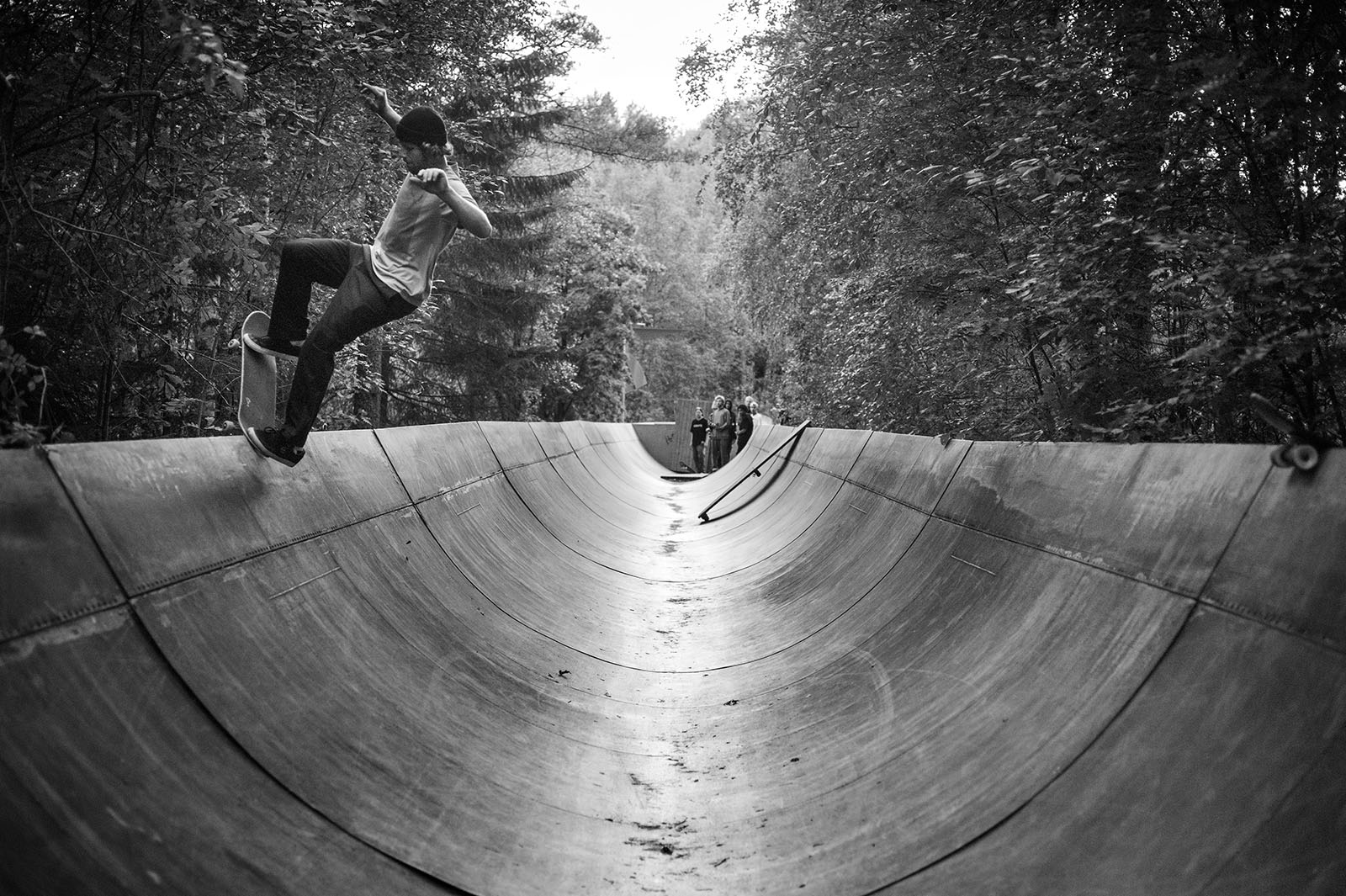
Barney Page. Fakie grind to fakie. Photo: Boon
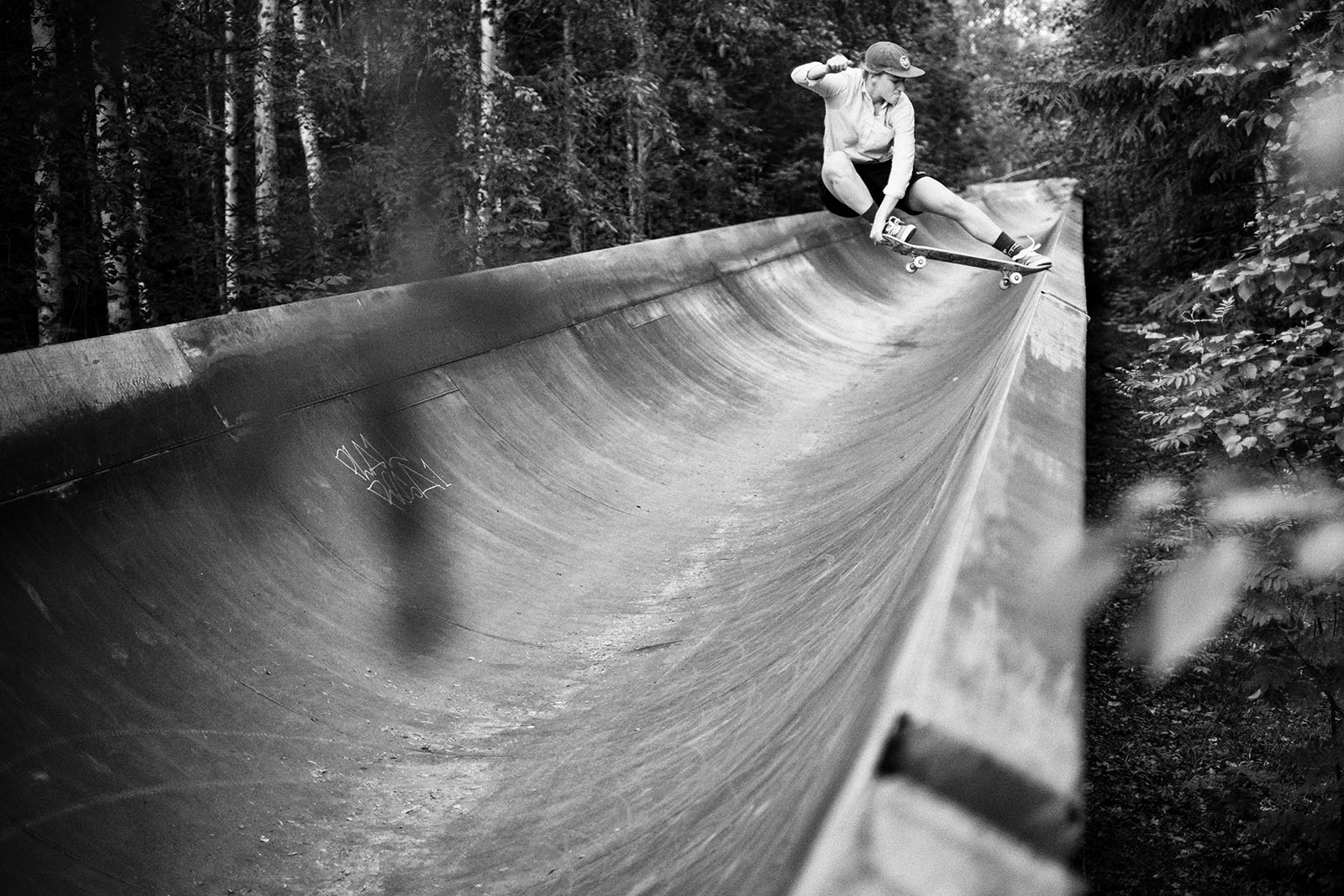
Emma Lindgren. Frontside crail. Photo: Nils
References:
Hagner, Mats 2011. Arboretum Norr och Umeleden, Hur det började.
Ursprungligen publicerad av Ubicon, rapport 5. https://docplayer.se/12522733-Arboretum-norr-och-umeleden-hur-det-borjade.html
[1] Hagner, Mats 2011. Arboretum Norr och Umeleden, Hur det började.
Ursprungligen publicerad av Ubicon, rapport 5.
[2] Hagner, Mats 2011.
Check out the podcast at the Skate Spot Pod
And for more skateboarding history of epic spots check out The Skateboarding Crucible ran by Tim Findlay who wrote this article for Confusion magazine issue 33

